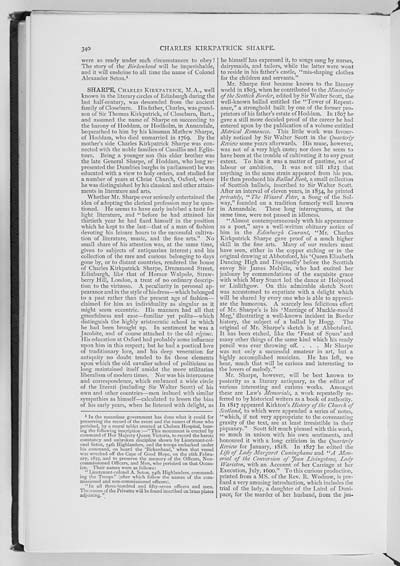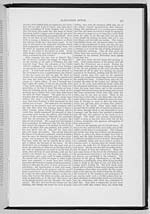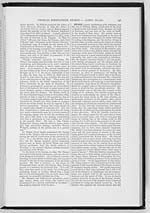Volume 3 > Half-Volume 5
(353) Page 340 - Sharpe, Charles Kilpatrick
Download files
Individual page:
Thumbnail gallery: Grid view | List view

340 were so ready under such circumstances to obey! The story of the Birkenhead will be imperishable, and it will enshrine to all time the name of Colonel Alexander Seton.1 SHARPE, CHARLES KIRKPATRICK, M.A., well known in the literary circles of Edinburgh during the last half-century, was descended from the ancient family of Closeburn. His father, Charles, was grand- son of Sir Thomas Kirkpatrick, of Closeburn, Bart., and assumed the name of Sharpe on succeeding to the barony of Hoddam, or Hodholm, in Annandale, bequeathed to him by his kinsman Mathew Sharpe, of Hoddam, who died unmarried in 1769. By the mother's side Charles Kirkpatrick Sharpe was con- nected with the noble families of Cassillis and Eglin- toun. Being a younger son (his elder brother was the late General Sharpe, of Hoddam, who long re- presented the Dumfries burghs in parliament) he was educated with a view to holy orders, and studied for a number of years at Christ Church, Oxford, where he was distinguished by his classical and other attain- ments in literature and arts. Whether Mr. Sharpe ever seriously entertained the idea of adopting the clerical profession may be ques- tioned. He seems to have early imbibed a taste for light literature, and "before he had attained his thirtieth year he had fixed himself in the position which he kept to the last�that of a man of fashion devoting his leisure hours to the successful cultiva- tion of literature, music, and the fine arts." No small share of his attention was, at the same time, given to subjects of antiquarian interest; and his collection of the rare and curious belonging to days gone by, or to distant countries, rendered the house of Charles Kirkpatrick Sharpe, Drummond Street, Edinburgh, like that of Horace Walpole, Straw- berry Hill, London, a treat of no ordinary descrip- tion to the virtuoso. A peculiarity in personal ap- pearance and in the style of his dress�which belonged to a past rather than the present age of fashion� claimed for him an individuality as singular as it might seem eccentric. His manners had all that gracefulness and ease�familiar yet polite�which distinguish the highly aristocratic school in which he had been brought up. In sentiment he was a Jacobite, and of course attached to the old regime. His education at Oxford had probably some influence upon him in this respect; but he had a poetical love of traditionary lore, and his deep veneration for antiquity no doubt tended to fix those elements upon which the old cavalier school of politicians so long maintained itself amidst the more utilitarian liberalism of modern times. Nor was his intercourse and correspondence, which embraced a wide circle of the literati (including Sir Walter Scott) of his own and other countries�men imbued with similar sympathies as himself�calculated to lessen the bias of his early years, when he listened with delight, as 1 In the meantime government has done what it could for preserving the record of the event and the names of those who perished, by a mural tablet erected at Chelsea Hospital, bear- ing the following inscription:�"This monument is erected by command of Her Majesty Queen Victoria, to record the heroic constancy and unbroken discipline shown by Lieutenant-col- onel Seton, 74th Highlanders, and the troops embarked under his command, on board the 'Birkenhead,' when that vessel was wrecked off the Cape of Good Hope, on the 26th Febru- ary, 1852, and to preserve the memory of the Officers, Non- commissioned Officers, and Men, who perished on that Occas- ion. Their names were as follows: " Lieutenant-colonel A. Seton, 74th Highlanders, command- ing the Troops" (after which follow the names of the com- missioned and non-commissioned officers). "In all three-hundred and fifty-seven officers and men. The names of the Privates will be found inscribed on brass plates adjoining." he himself has expressed it, to songs sung by nurses, dairymaids, and tailors, while the latter were wont to reside in his father's castle, "mis-shaping clothes for the children and servants." Mr. Sharpe first became known to the literary world in 1803, when he contributed to the Minstrelsy of the Scottish Border, edited by Sir Walter Scott, the well-known ballad entitled the "Tower of Repent- ance," a stronghold built by one of the former pro- prietors of his father's estate of Hoddam. In 1807 he gave a still more decided proof of the career he had entered upon by the publication of a volume entitled Metrical Romances. This little work was favour- ably noticed by Sir Walter Scott in the Quarterly Review some years afterwards. His muse, however, was not of a very high caste; nor does he seem to have been at the trouble of cultivating it to any great extent. To him it was a matter of pastime, not of labour or ambition. It was not till 1823 that anything in the same strain appeared from his pen. He then produced his Ballad Book, a small collection of Scottish ballads, inscribed to Sir Walter Scott. After an interval of eleven years, in 1834, he printed privately, " The Wizard Peter, a Song of the Sol- way," founded on a tradition formerly well known in Annandale. These long interregnums, at the same time, were not passed in idleness. "Almost contemporaneously with his appearance as a poet," says a well-written obituary notice of him in the Edinburgh Courant, "Mr. Charles Kirkpatrick Sharpe gave proof of a much higher skill in the fine arts. Many of our readers must have seen, either in the copper etching or in the original drawing at Abbotsford, his ' Queen Elizabeth Dancing High and Disposedly' before the Scottish envoy Sir James Melville, who had excited her jealousy by commendations of the exquisite grace with which Mary Stuart led the dance at Holyrood or Linlithgow. On this admirable sketch Scott was accustomed to expatiate with a delight which will be shared by every one who is able to appreci- ate the humorous. A scarcely less felicitous effort of Mr. Sharpe's is his ' Marriage of Muckle-mou'd Meg,' illustrating a well-known incident in Border history, the subject of a ballad by Hogg. The original of Mr. Sharpe's sketch is at Abbotsford. It has been etched, like the 'Feast of Spurs' and many other things of the same kind which his ready pencil was ever throwing off. . . . Mr Sharpe was not only a successful amateur in art, but a highly accomplished musician. He has left, we hear, much that will be curious and interesting to the lovers of melody." Mr. Sharpe, however, will be best known to posterity as a literary antiquary, as the editor of various interesting and curious works. Amongst these are Law's Memorials, a work repeatedly re- ferred to by historical writers as a book of authority. In 1817 appeared Kirkton's History of the Church of Scotland, to which were appended a series of notes, "which, if not very appropriate to the covenanting gravity of the text, are at least irresistible in their piquancy." Scott felt much pleased with this work, so much in unison with his own sentiments, and honoured it with a long criticism in the Quarterly Review for January, 1818. In 1827 he edited the Life of Lady Margaret Cuninghame and "A Mem- orial of the Conversion of Jean Livingstone, Lady Wariston, with an Account of her Carriage at her Execution, July, 1600." To this curious production, printed from a MS. of the Rev. R. Wodrow, is pre- fixed a very amusing introduction, which includes the trial of the lady, a daughter of the Laird of Duni- pace, for the murder of her husband, from the jus-
Set display mode to:
![]() Universal Viewer |
Universal Viewer | ![]() Mirador |
Large image | Transcription
Mirador |
Large image | Transcription
Images and transcriptions on this page, including medium image downloads, may be used under the Creative Commons Attribution 4.0 International Licence unless otherwise stated. ![]()
| Biographical dictionary of eminent Scotsmen > Volume 3 > Half-Volume 5 > (353) Page 340 - Sharpe, Charles Kilpatrick |
|---|
| Description | Spine title: Half-Vol. V. Macadam to Smith. |
|---|---|
| Description | Volume III. Contains names alphabetically from Macadam to Young. |
|---|

